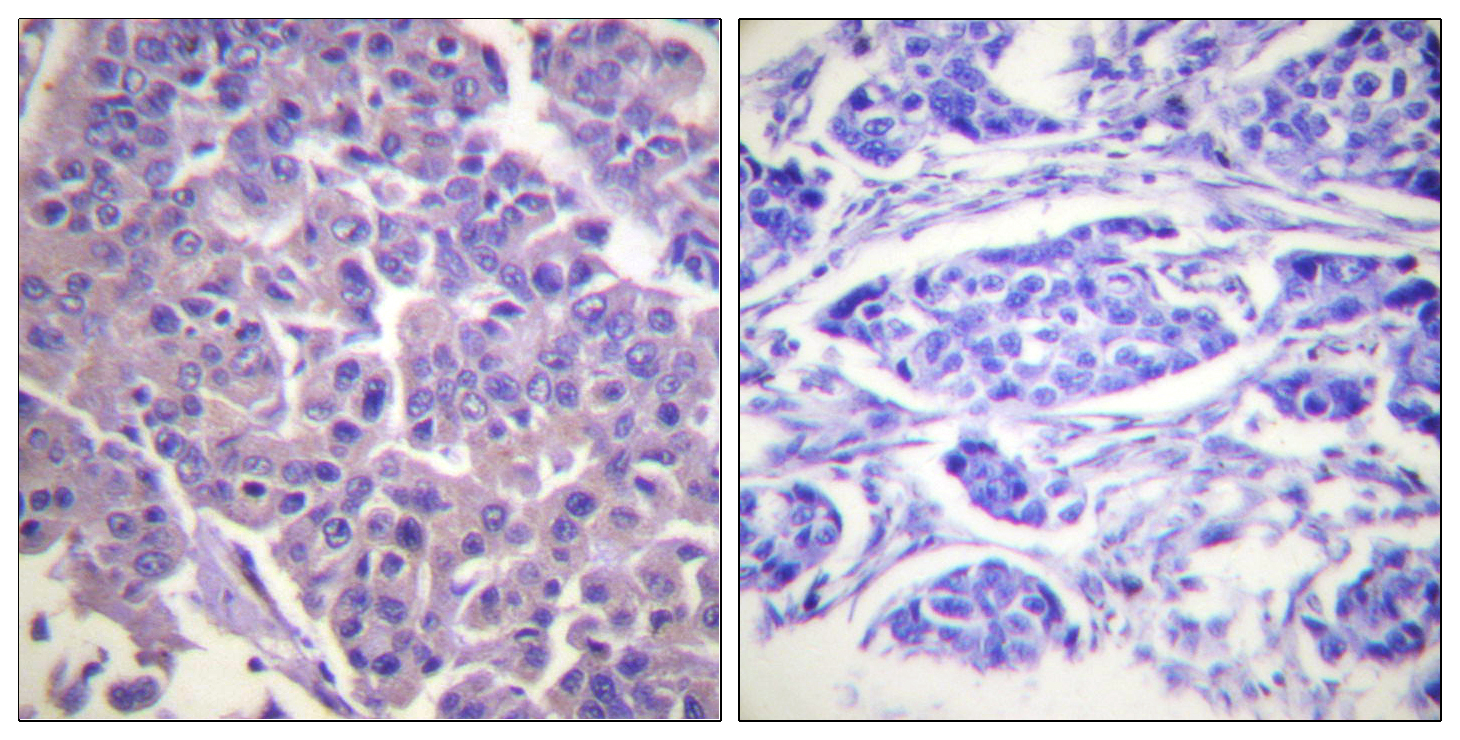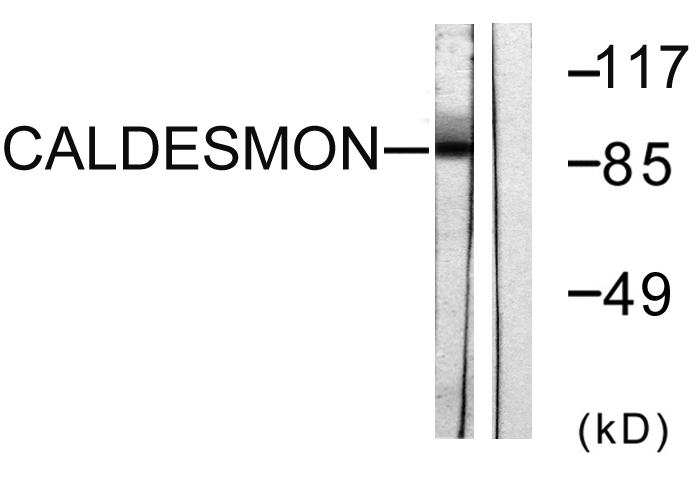产品名称
Caldesmon Rabbit Polyclonal Antibody
别名
CALD1; CAD; CDM; Caldesmon; CDM
存储缓冲液
Liquid in PBS containing 50% glycerol, 0.5% BSA and 0.02% New type preservative N.
Human Gene Link
http://www.ncbi.nlm.nih.gov/sites/entrez?db=gene&term=800
Human Swissprot No.
Q05682
Human Swissprot Link
http://www.uniprot.org/uniprotkb/Q05682/entry
Rat Gene Link
http://www.ncbi.nlm.nih.gov/sites/entrez?db=gene&term=25687
Rat Swissprot Link
http://www.uniprot.org/uniprot/Q62736
免疫原
The antiserum was produced against synthesized peptide derived from human Caldesmon. AA range:744-793
特异性
Caldesmon Polyclonal Antibody detects endogenous levels of Caldesmon protein.
稀释度
WB 1:500 - 1:2000. IHC 1:100 - 1:300. IF 1:200 - 1:1000. ELISA: 1:5000. Not yet tested in other applications.
宿主
Polyclonal, Rabbit,IgG
背景介绍
This gene encodes a calmodulin- and actin-binding protein that plays an essential role in the regulation of smooth muscle and nonmuscle contraction. The conserved domain of this protein possesses the binding activities to Ca(2+)-calmodulin, actin, tropomyosin, myosin, and phospholipids. This protein is a potent inhibitor of the actin-tropomyosin activated myosin MgATPase, and serves as a mediating factor for Ca(2+)-dependent inhibition of smooth muscle contraction. Alternative splicing of this gene results in multiple transcript variants encoding distinct isoforms. [provided by RefSeq, Jul 2008],
组织表达
High-molecular-weight caldesmon (isoform 1) is predominantly expressed in smooth muscles, whereas low-molecular-weight caldesmon (isoforms 2, 3, 4 and 5) are widely distributed in non-muscle tissues and cells. Not expressed in skeletal muscle or heart.
细胞定位
Cytoplasm, cytoskeleton . Cytoplasm, myofibril . Cytoplasm, cytoskeleton, stress fiber . On thin filaments in smooth muscle and on stress fibers in fibroblasts (nonmuscle). .
信号通路
Vascular smooth muscle contraction;
功能
domain:The N-terminal part seems to be a myosin/calmodulin-binding domain, and the C-terminal a tropomyosin/actin/calmodulin-binding domain. These two domains are separated by a central helical region in the smooth-muscle form.,function:Actin- and myosin-binding protein implicated in the regulation of actomyosin interactions in smooth muscle and nonmuscle cells (could act as a bridge between myosin and actin filaments). Stimulates actin binding of tropomyosin which increases the stabilization of actin filament structure. In muscle tissues, inhibits the actomyosin ATPase by binding to F-actin. This inhibition is attenuated by calcium-calmodulin and is potentiated by tropomyosin. Interacts with actin, myosin, two molecules of tropomyosin and with calmodulin. Also play an essential role during cellular mitosis and receptor capping.,PTM:In non-muscle cells, phosphorylation by CDC2 during mitosis causes caldesmon to dissociate from microfilaments. Phosphorylation reduces caldesmon binding to actin, myosin, and calmodulin as well as its inhibition of actomyosin ATPase activity. Phosphorylation also occurs in both quiescent and dividing smooth muscle cells with similar effects on the interaction with actin and calmodulin and on microfilaments reorganization.,similarity:Belongs to the caldesmon family.,subcellular location:On thin filaments in smooth muscle and on stress fibers in fibroblasts (nonmuscle).,tissue specificity:High-molecular-weight caldesmon (isoform 1) is predominantly expressed in smooth muscles, whereas low-molecular-weight caldesmon (isoforms 2, 3, 4 and 5) are widely distributed in non-muscle tissues and cells. Not expressed in skeletal muscle or heart.,
纯化
The antibody was affinity-purified from rabbit antiserum by affinity-chromatography using epitope-specific immunogen.



